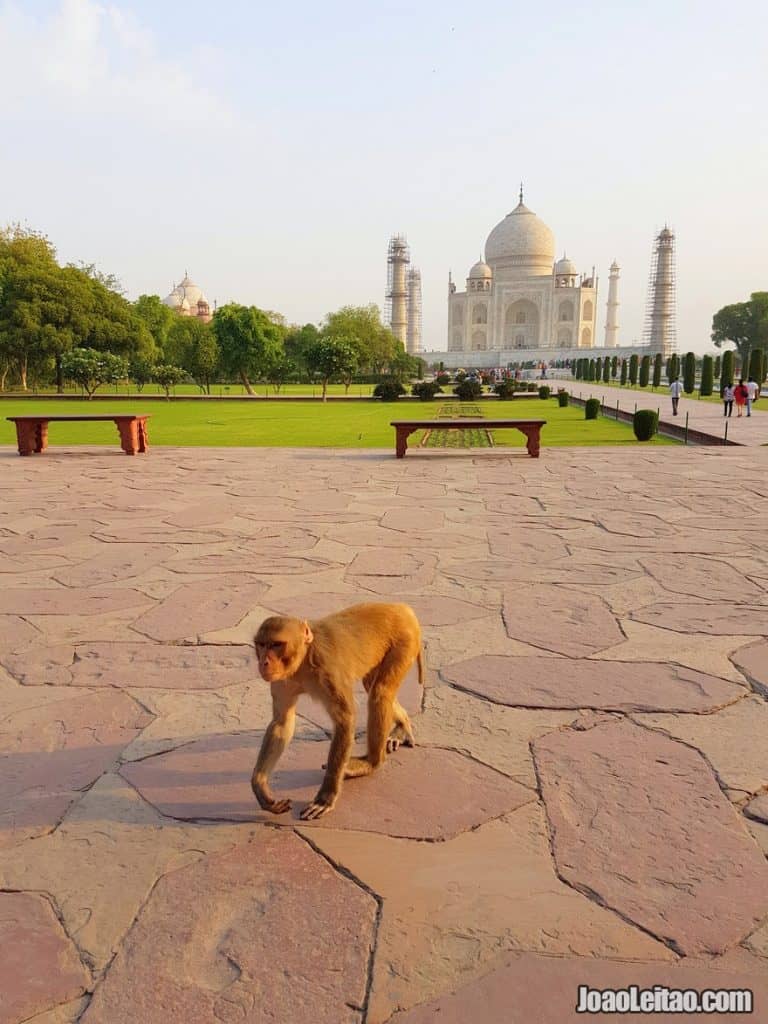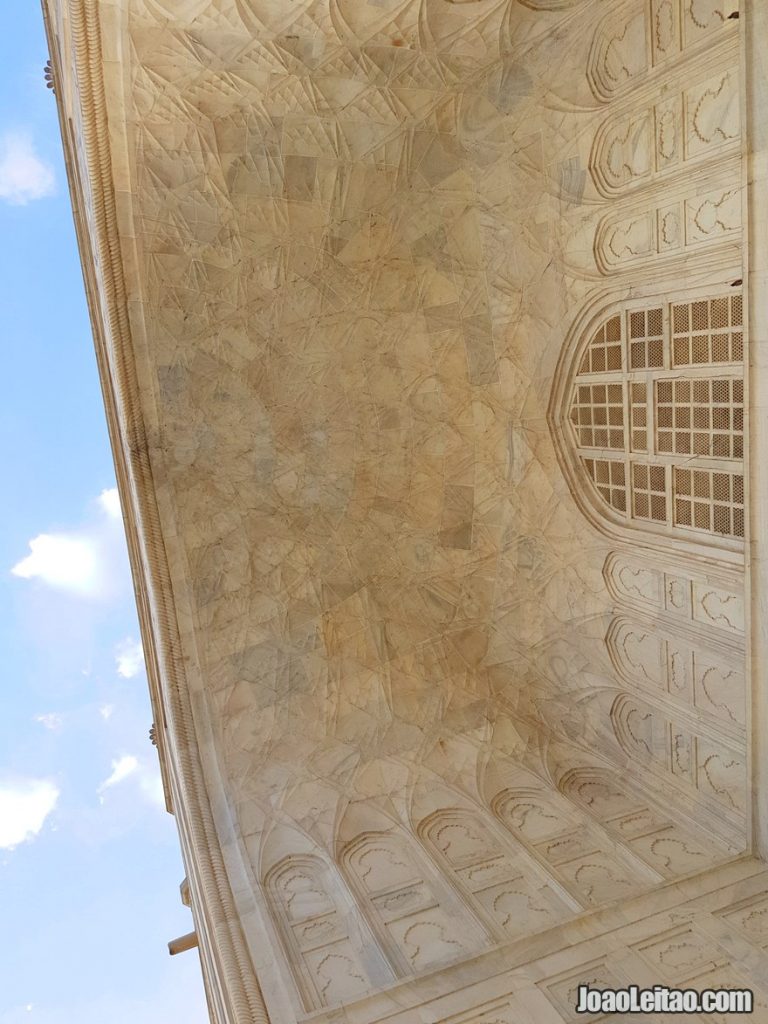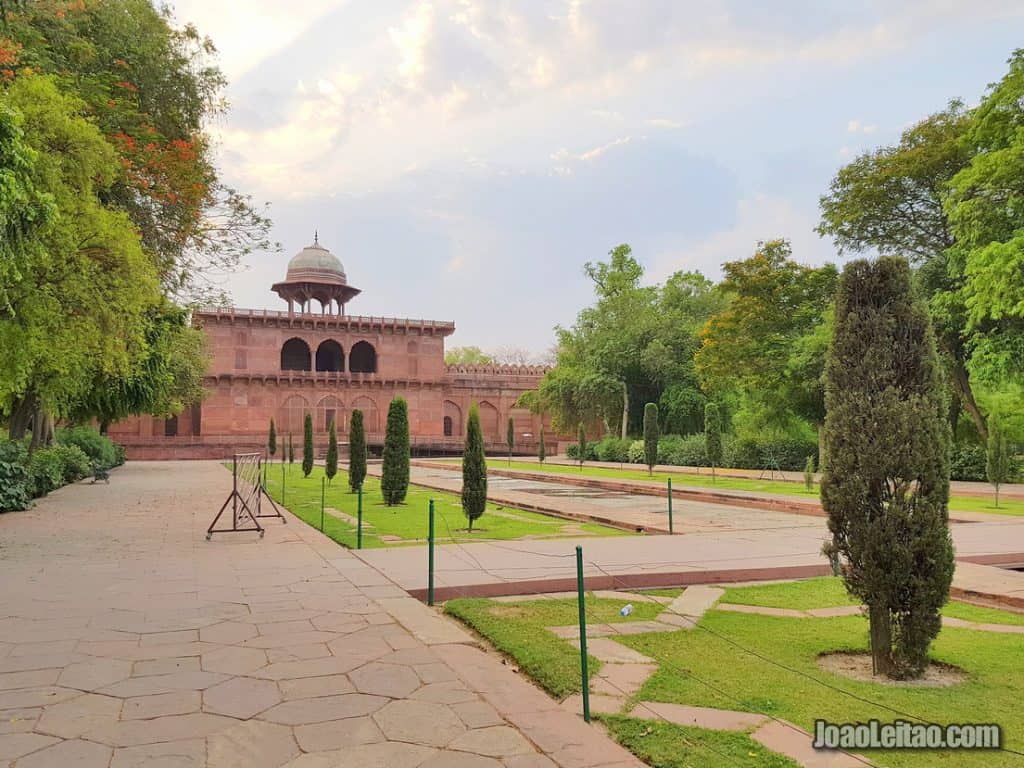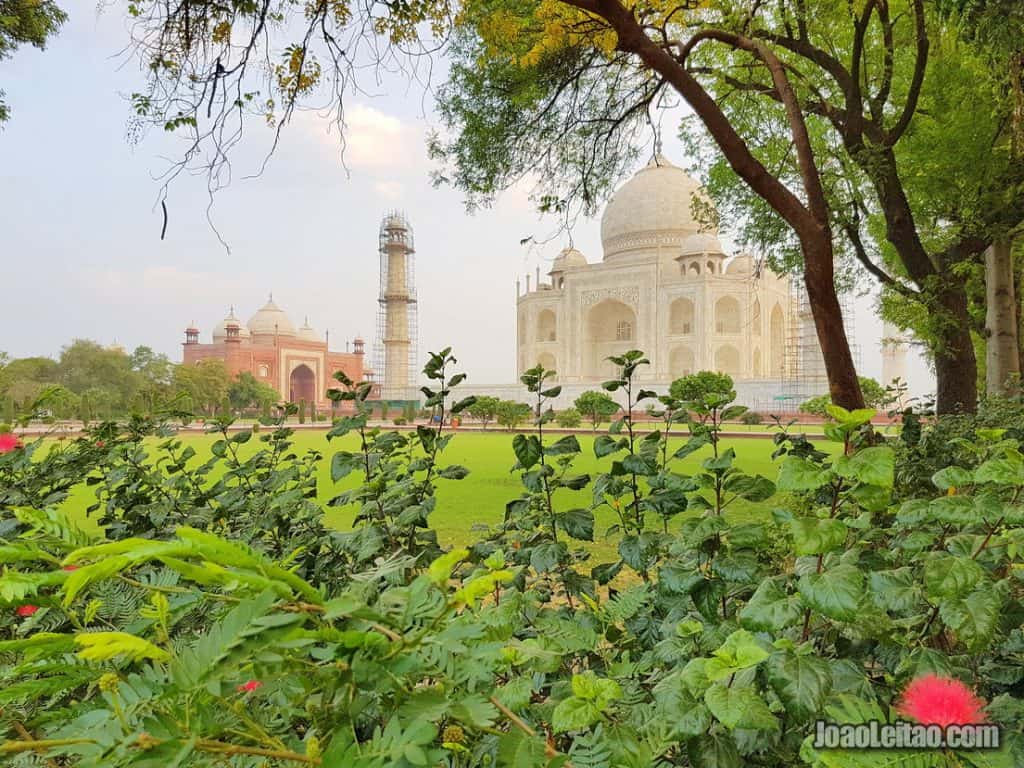Table of Contents
Visit Taj Mahal
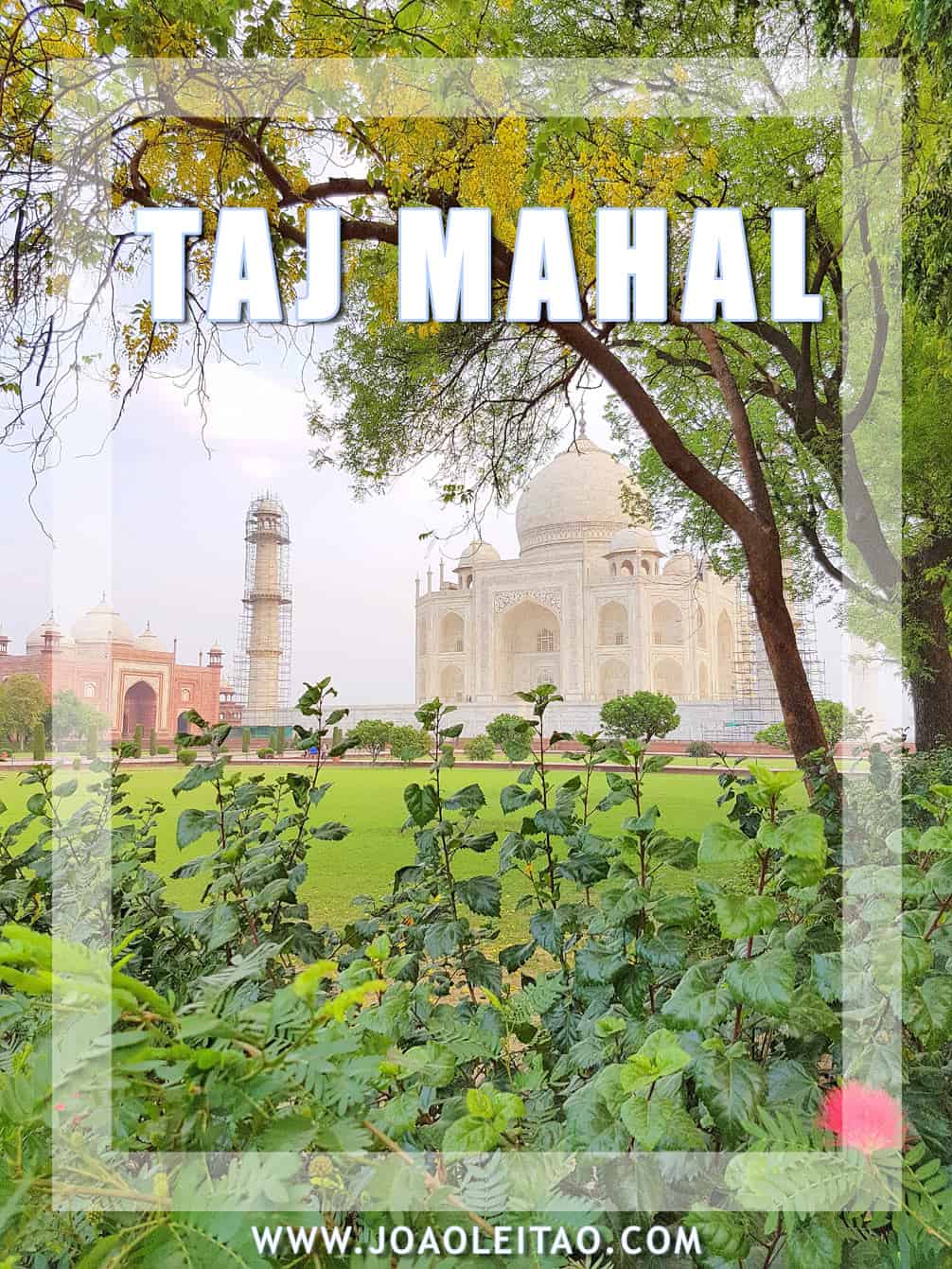
The Taj Mahal, located in Agra, is a magical place.
Taj Mahal is located near the city of Agra, in the North of India. It’s one of the most famous manmade structures in the world, listed as a UNESCO World Heritage Site.
If you want to visit Taj Mahal, you have to go to the monument gate early morning. Try to be the first on the queue.
The Taj Mahal was built by orders of emperor Shah Jahan, and it was finished in 1648. It’s a monumental compound of buildings built around the mausoleum of Mumtaz Mahal, the emperor’s favorite wife. She died giving birth while on a hunting trip with her husband. On her death bed, she requested that her husband built a monument that could honor their love for each other and asked him to celebrate the anniversary of her death every year onwards.
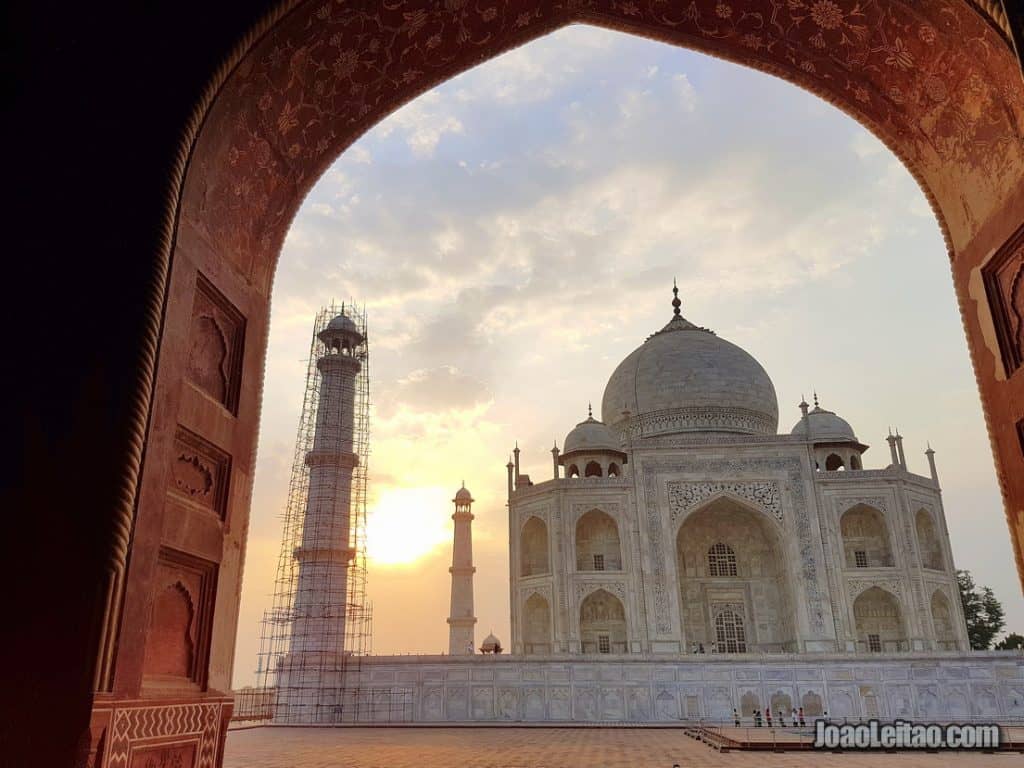
That’s how the Taj Mahal was born, in all its white marble splendor, of magnificent domes and minarets, enveloped by lush gardens and the symmetry that’s the compound’s calling card. Later, when Shah Jahan passed, his body was laid to rest by the love of his life.
This masterpiece of Indian architecture has a dome measuring 44.4 meters / 145 feet high and is surrounded by four minarets.
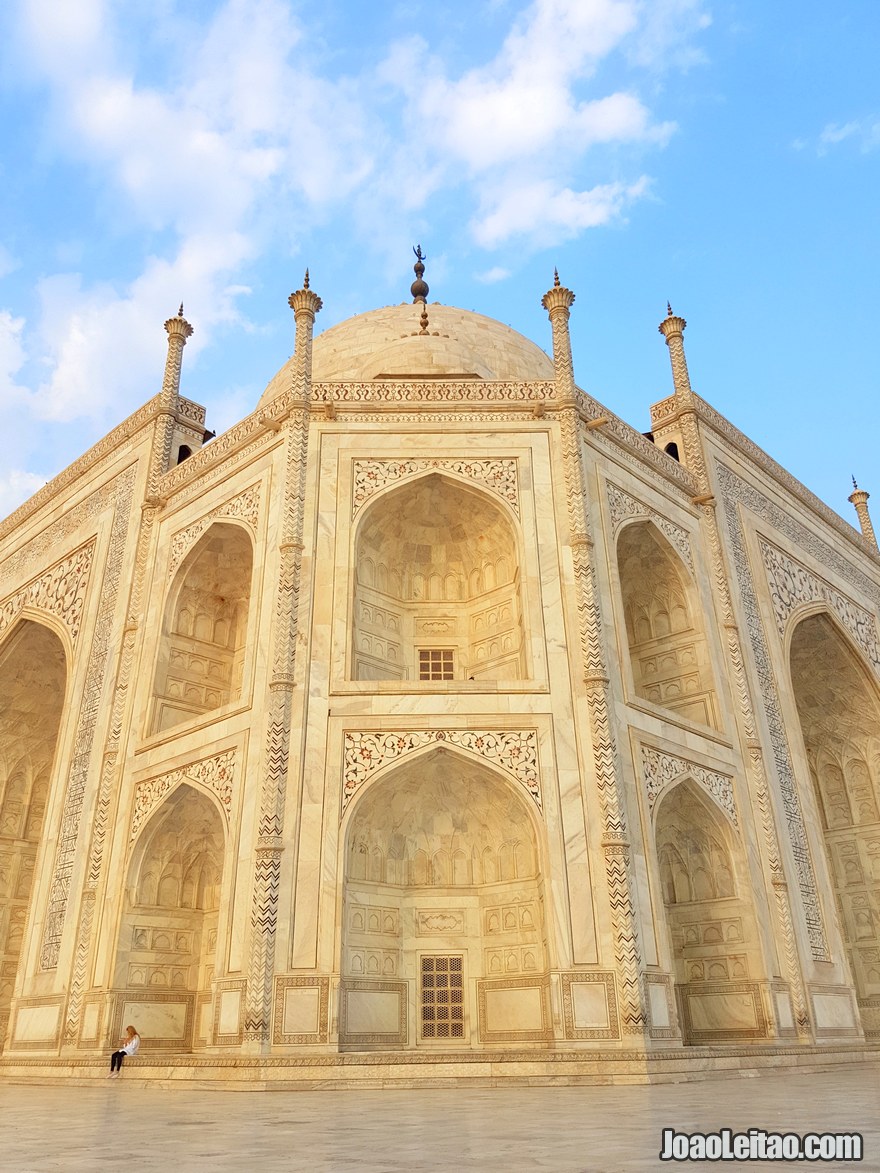
“The mausoleum is covered in marble and carved with floral ornaments. The building gets different shades of white depending on the time of the day.”
Agra was built in 1475 by Badal Singh and Sikandar Lodi. It became the capital of the Mughal Empire and has about 2 million inhabitants now.
The Taj Mahal is on the top list of the most iconic buildings in the world. This is also the “ex-libris” of tourism in India.
I share with you some impressive photos of the Taj Mahal. Beautiful images that will make you want to visit Taj Mahal on your next travel to India.
Other special places in India
- Taj Mahal
- Varanasi
- Ajanta Caves
- Dal Lake in Srinagar
- Jaisalmer
- Jaipur
- Amritsar
- Kanha National Park
- Palolem Beach in Goa
- Virupakhsa Temple in Hampi
- Udaipur
- Leh in Ladakh
Curiosities about the Taj Mahal:
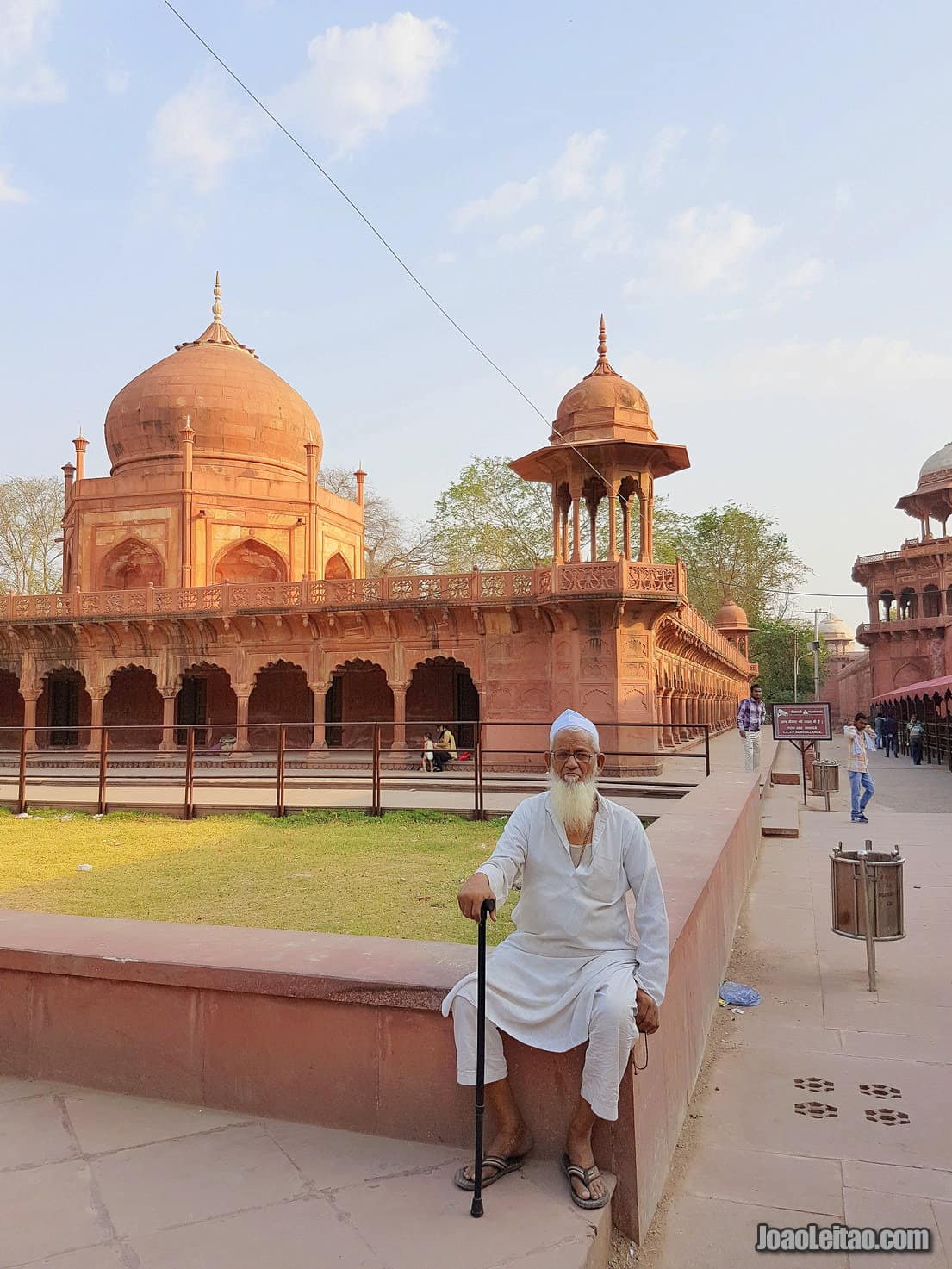
- The Taj Mahal is a mausoleum of Indian Muslim architecture. Its main building is made of white marble and decorated with floral motifs made out of precious and other colored stones;
- The Taj Mahal represents the most beautiful and sophisticated example of Mughal architecture, an Islamic empire that controlled much of India. Listed by UNESCO as a World Heritage Site, the Taj Mahal took 17 years to be built;
- The Great Gate built with red sandstone is called Roza Darwaza and is the main tomb complex entrance;
- The four decorative minarets with 41.6 meters / 136 feet tall, are placed so as to never damage the mausoleum in case of collapse;
- There are two red sandstone buildings on each side of the Taj Mahal. One is a mosque, while the other is just there for architectural symmetry;
- There is a garden with a giant fountain that goes from the entrance all the way to the tomb. To get to the mausoleum itself, we can walk all this way, taking pictures and visiting the lateral gardens;
- Like most of the tombs from the Mughal Empire, the decorative basic elements are of Persian origin;
- The four water channels connecting to the central pool symbolize the four rivers of Paradise mentioned in the Quran.
Visit Taj Mahal
Opening times: Taj Mahal only closes on Friday (even during full-moon night). Other days it’s always opened from sunrise to sunset. If you buy the ticket online, you will be getting inside the complex much faster. Try to arrive early morning and you will have less people around.
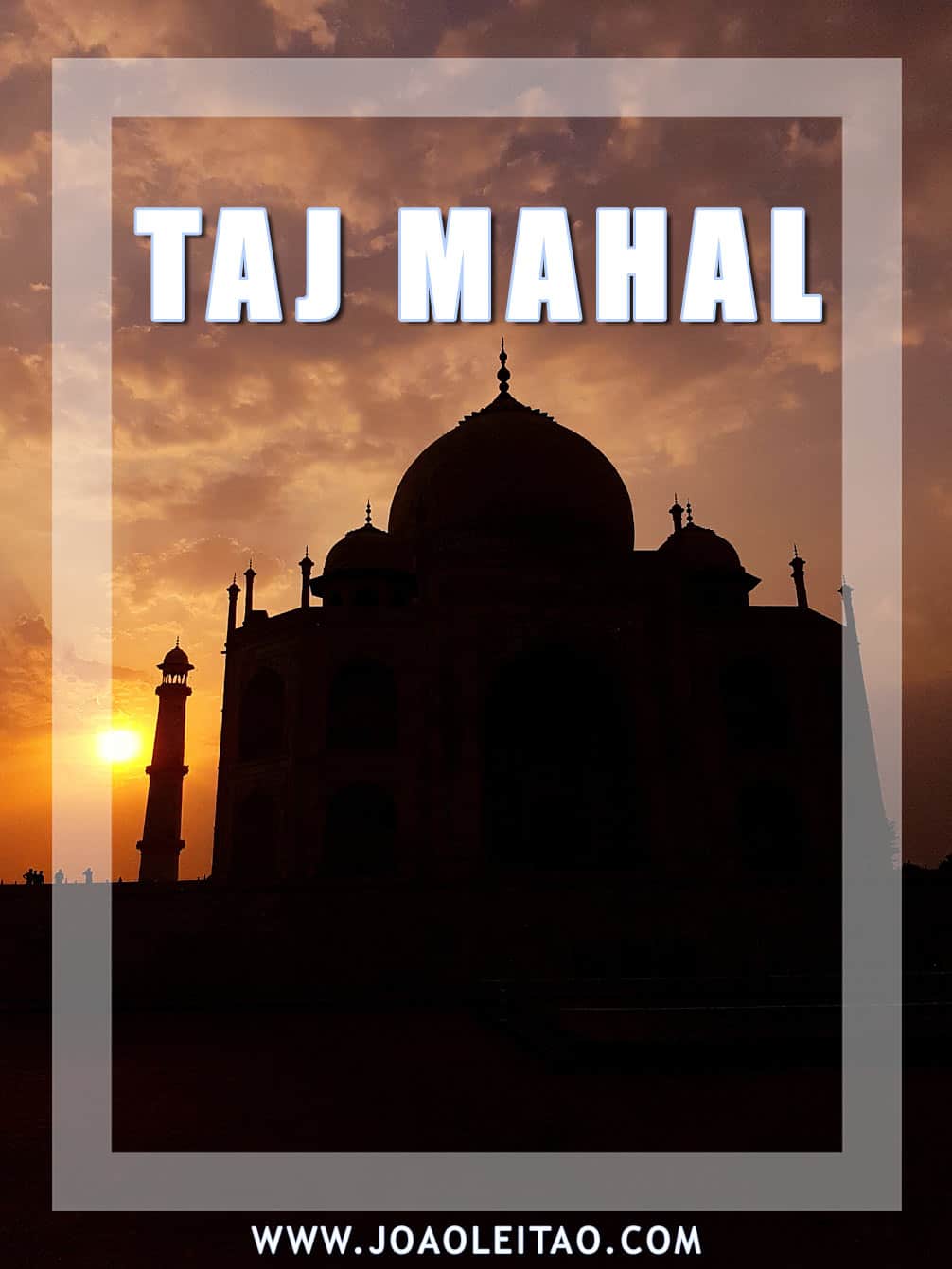
The Taj Mahal is composed by:
- West Gate
- East Gate
- South Gate
- Great Gate
- Jilaukhana patio
- Gardens
- Workers living spaces
- Saheli Burj Tombs
- Water canals
- Central pool
- Minarets
- Mosque
- Marble platform
- Mihman Khana
- Mumtaz Mahal Mausoleum
Itinerary inside Taj Mahal complex
Walking tour: Entering from the West Gate, this is a good walking tour of the complex until you reach the Mihman Khana (right building), Mumtaz Mahal Mausoleum (center building), and the Mosque (left building).
Mumtaz Mahal Mausoleum
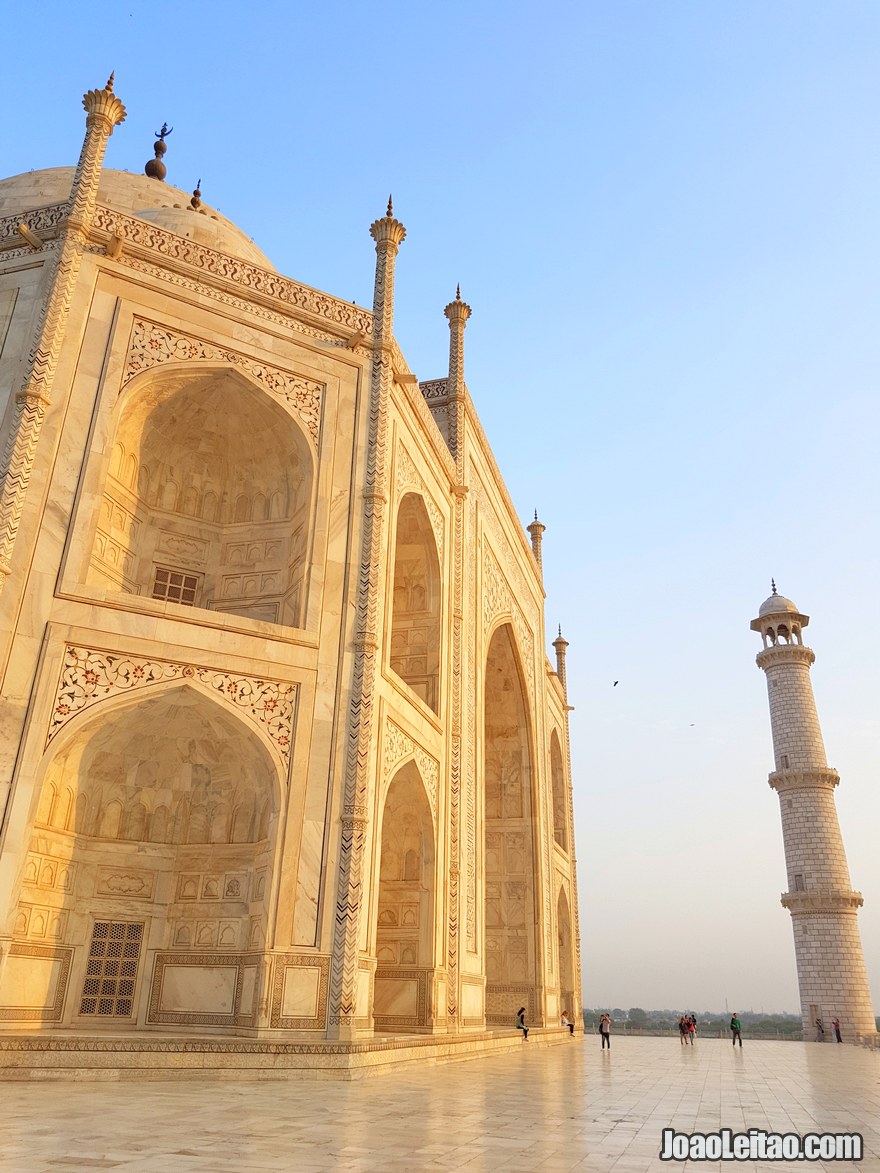
We can notice the grandeur of the building on this photo. People are very small near such imposing construction.
In a broader sense, a visit to the Taj Mahal is basically a visit to the Mumtaz Mahal Mausoleum, the favorite of Shah Jahan’s three wives, a Mughal emperor from the mid 17th century.
The tomb itself is called rauza-i maqqadas (Holy Tomb), rauza-i munauwara (Illuminated Tomb), and rauza-i mutahhara (Pure Tomb).
The monument was built according to the Hasht Bihisht, a Moghul concept that guides the construction of such places and that focuses on space harmony and symmetry.
The octangular plan has four wide corners and four reduced corners, and there’s an overlapping plan that follows an X shape. The exterior is heavily decorated with floral motifs carved in stone, where, again, symmetry is highlighted.
There are passages from the Koran about the divine forgiveness, the final judgment, and the reward of the faithful.
Gardens of the Taj Mahal
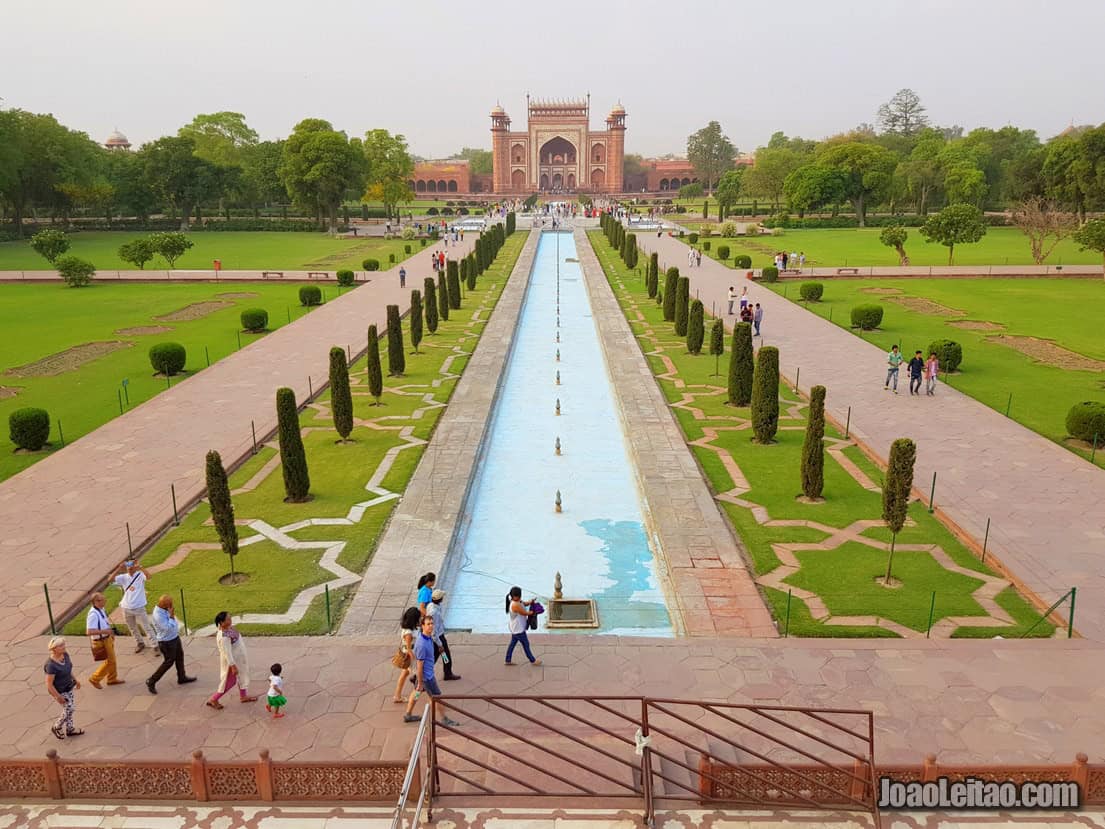
The gardens spreading in front of the Taj Mahal are connected to the idea of Paradise according to the Islamic faith.
There are four watercourses crossing the gardens that symbolize each one of the four rivers in paradise: water, honey, wine, and milk.
Gardens of the Taj Mahal Gardens of the Taj Mahal
Everything in the gardens is in groups of four, Islam’s most sacred number, and its multiples: four areas, 16 flower beds, each with 400 plants.
There are two species of trees in the garden, arranged symmetrically: cypress, that symbolizes death, and fruit trees, symbolizing life.
In the center of the garden, there’s a set of fountains and, of course, the lotus pond that reflects the façade of the Taj Mahal and provides the classic photo opportunity.
Water Canals of the Taj Mahal
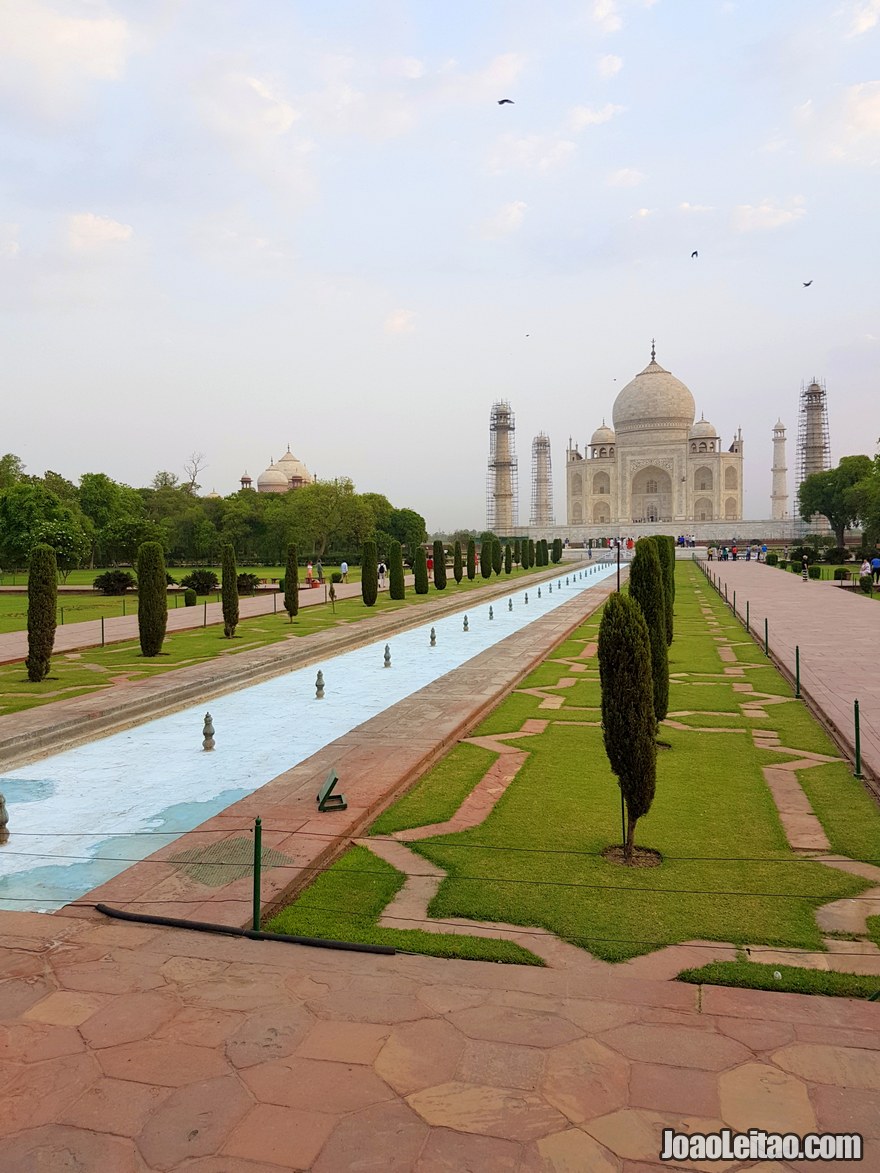
Near the walls to the west of the compound, you can see the canals that used to carry the water to the Taj Mahal gardens from the Yamuna river and that still keep the original look.
The aqueduct is built on arches, but the water collection station by the river no longer exists because the Khan Alam Basai Ghat Mandir temple was built on top of it.
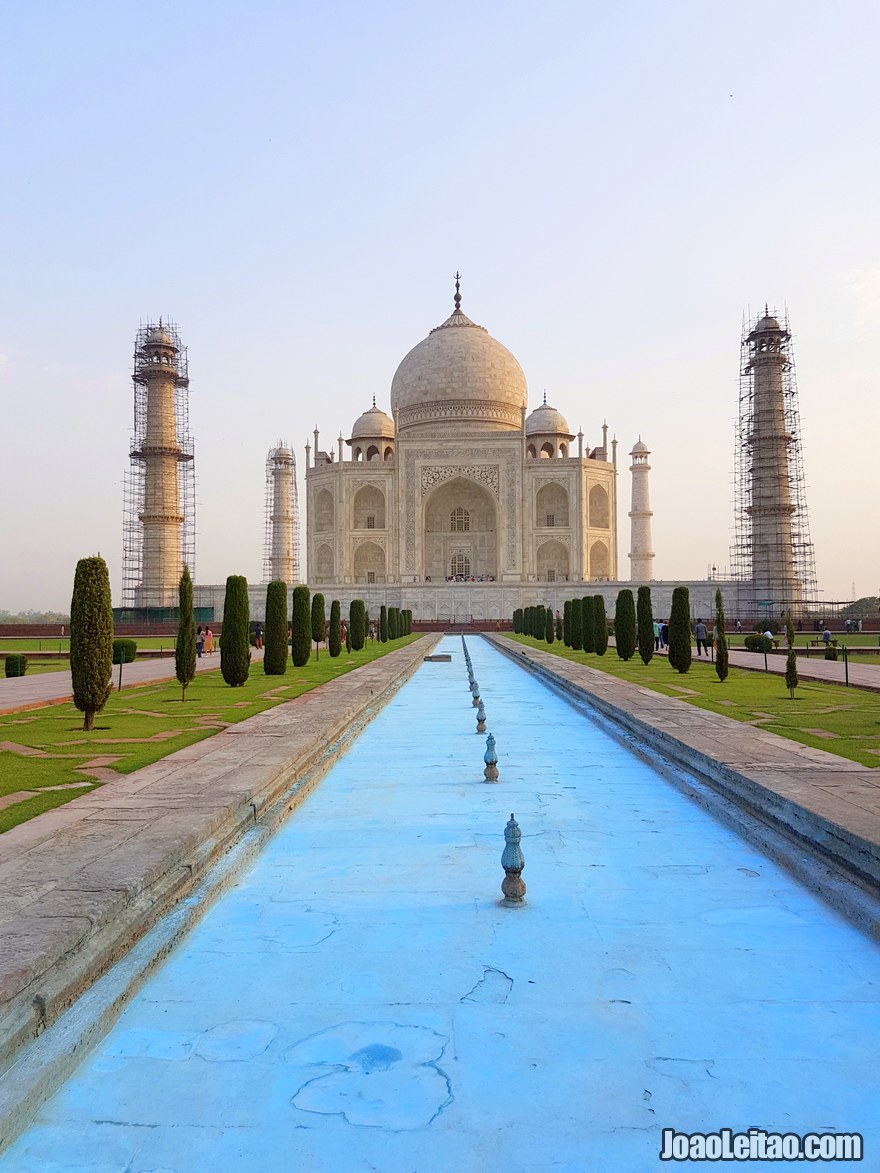
There was a first well that collected all the water before it was carried to the top towards the gardens, through mechanisms powered by animal force.
The western wall is almost 10 meters high. It was tall enough to create enough pressure to water the gardens and fill the fountains. They still use part of this circuit to supply water to the gardens, but some of the pipes have been replaced, and they started to use electric pumps.
Minarets of the Taj Mahal
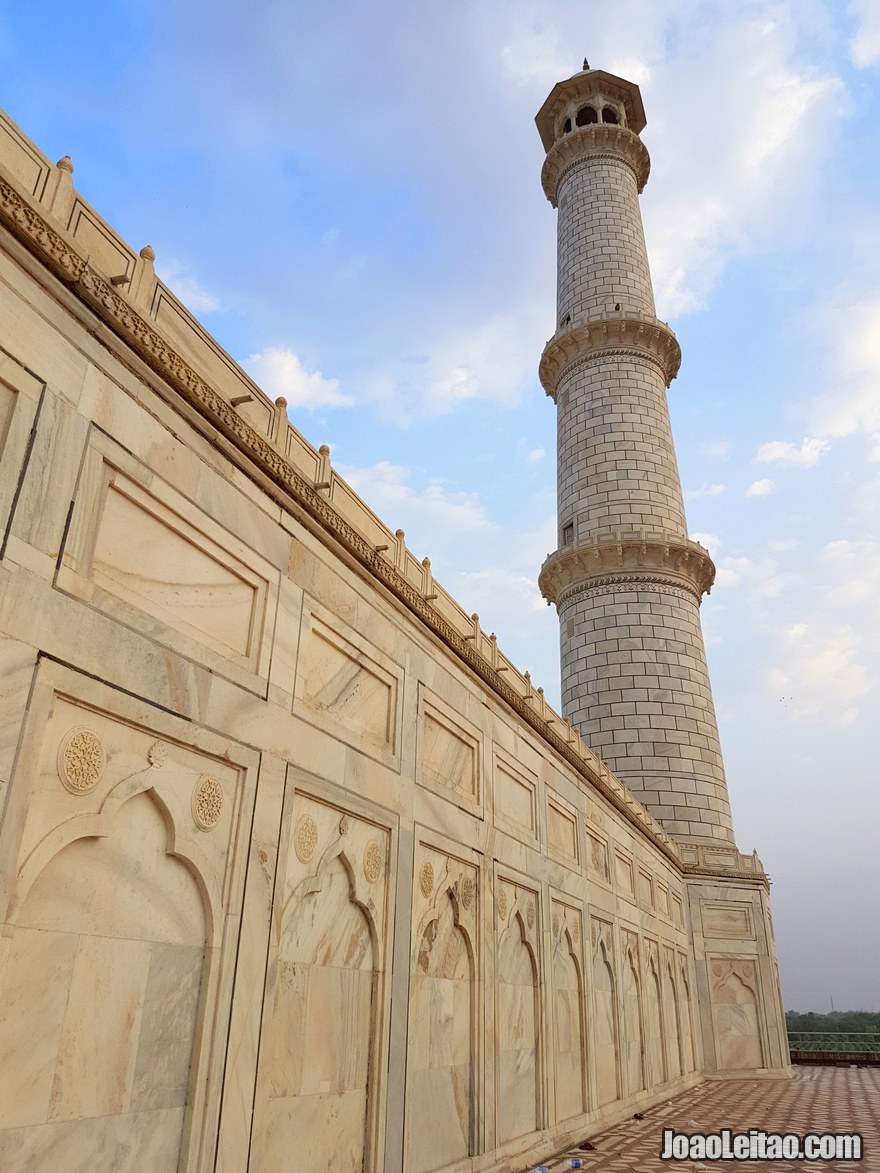
The four minarets rising from the corners of the Taj Mahal symbolize the stairway to Heaven. Such structures were common in the 17th century, influenced by the Ottoman architecture of mosques surrounded by several minarets.
The bigger the number, the more important the mosque. Tourists can’t visit the minarets, topped by a crescent moon 42 meters high. Notice the rectangular doors that give access to the balconies and their grid pattern windows.
Also notice the minarets’ slight inclination, that withdraws them from the main block of the Taj Mahal, and created to keep the mausoleum intact in case of a fall. The base of the minarets is octagonal, but their shape is cylindrical, each with three balconies.
Mihman Khana
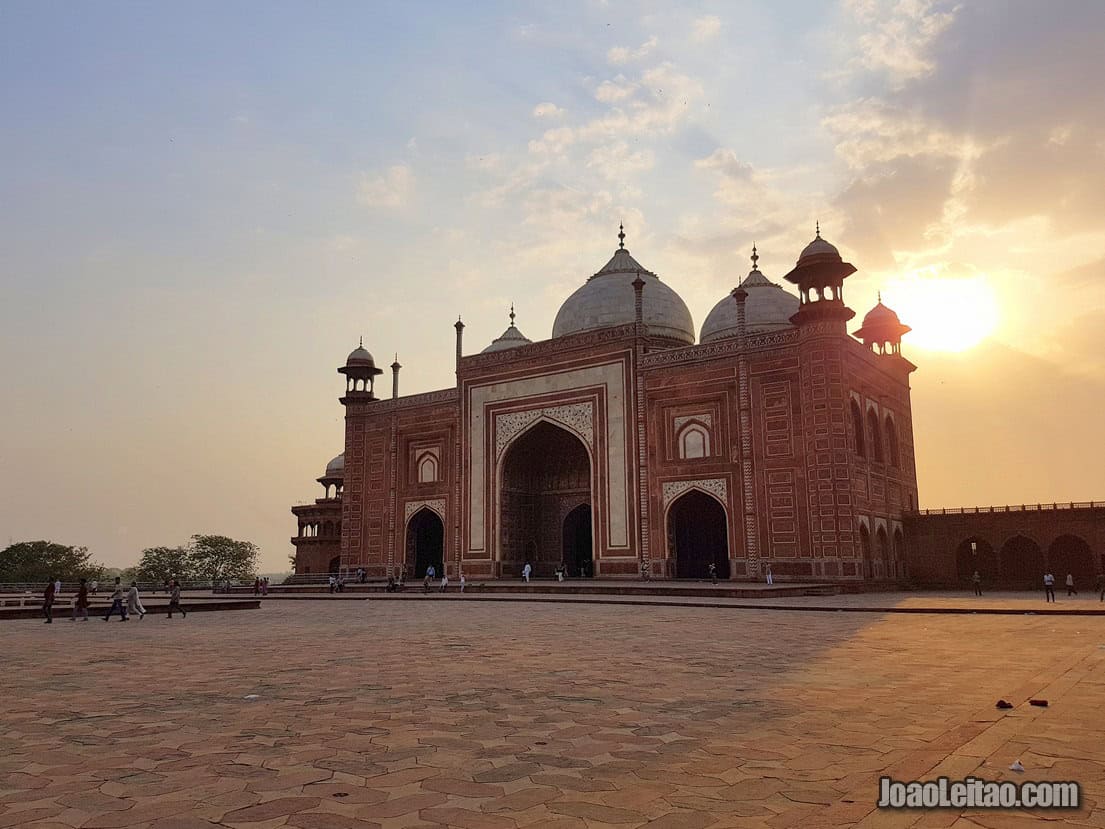
This building to the right of the Taj Mahal garden creates a sense of symmetry with the mosque on the left side. Except for the minaret and the mihrab, the Mihman Khana is almost a replica of the mosque, built with the same kind of red limestone and with similar three marble domes with flower-shaped pinnacles.
Opinions diverge on what was the purpose of the Mihman Khana, also known as Naqqar Khana, Inn or Meeting Room. It’s almost sure that it was used to accommodate public figures who came for the celebrations of Mumtaz Mahal’s death. But it’s also likely that it served as an inn for the pilgrims on their travels or a meeting room for the religious people to get together before the prayers.
Later, in the 18th and 19th centuries, it was a banquet hall for Indian princes and British dignitaries.
Mosque of the Taj Mahal
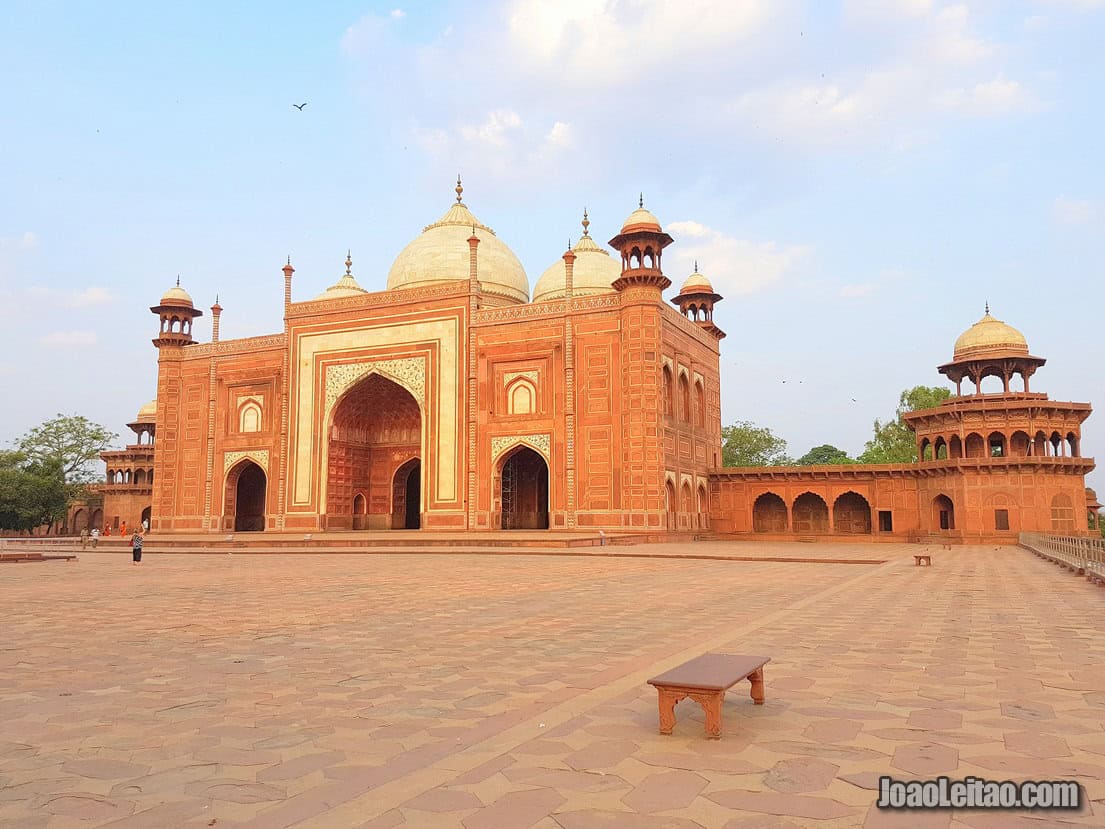
Located west of the Taj Mahal, the mosque has two purposes.
The first one is to conform to the Islamic laws that demand a mosque next to any mausoleum. The second one is to have that sense of symmetry together with the Inn on the opposite side of the mausoleum in the East.
The temple is made in red stone, probably by the hand of Isa Mohammad. It’s almost a perfect replica of the Inn, except for the Mihrab, a relief that marks where is Meca, and the Minrab, the place where the mullah gives his sermon, to the right of the Mihrab. Inside, Koran verses from the sura 91 decorate the walls.
Great Gate of the Taj Mahal
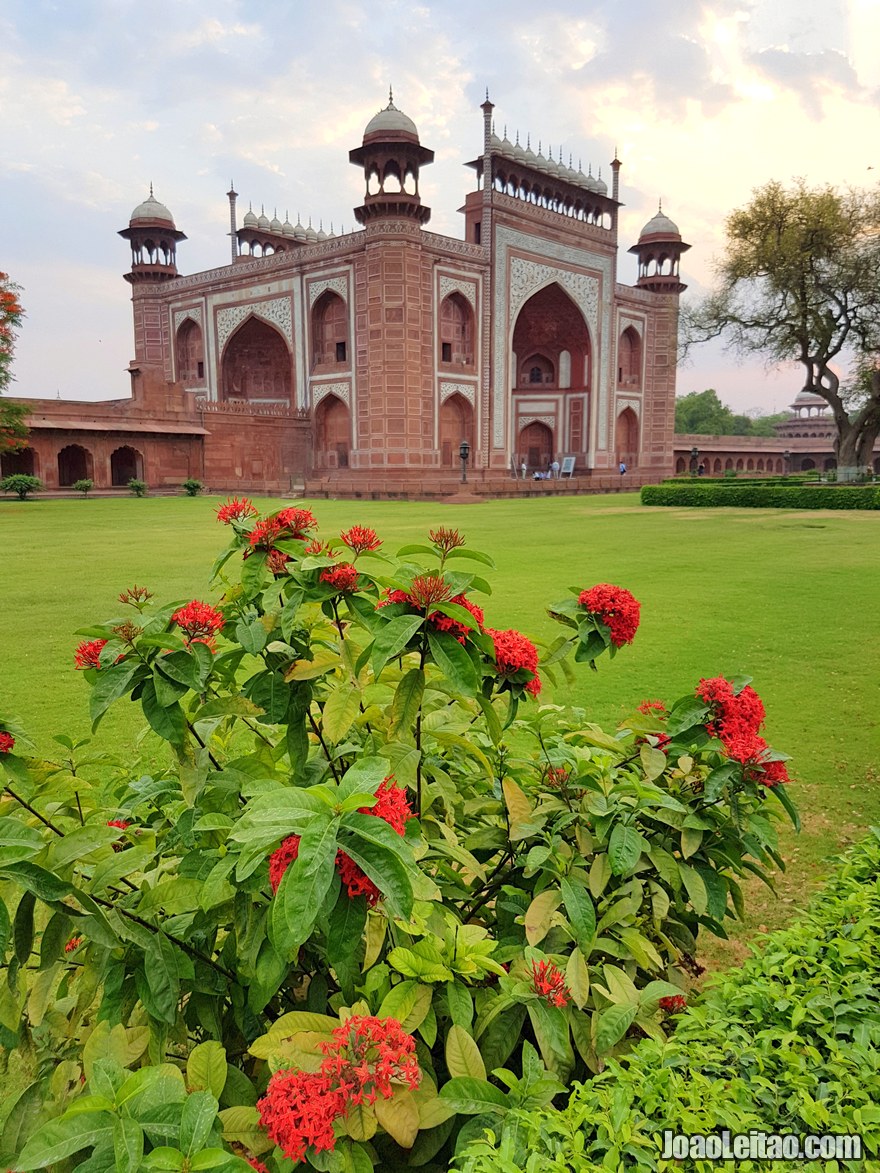
The Great Gate to the Mausoleum (Darwaza-i Rauza) is made of red stone, sided by octagonal minarets and covered by a dome, generously decorated in white marble.
The top of the arches is ornate with flower motifs. There are Koran inscriptions on the entrance, in Arabic, taken from the sura that invites the faithful ones into Paradise. On top, there are two rows of 11 small domes known as guldastas.
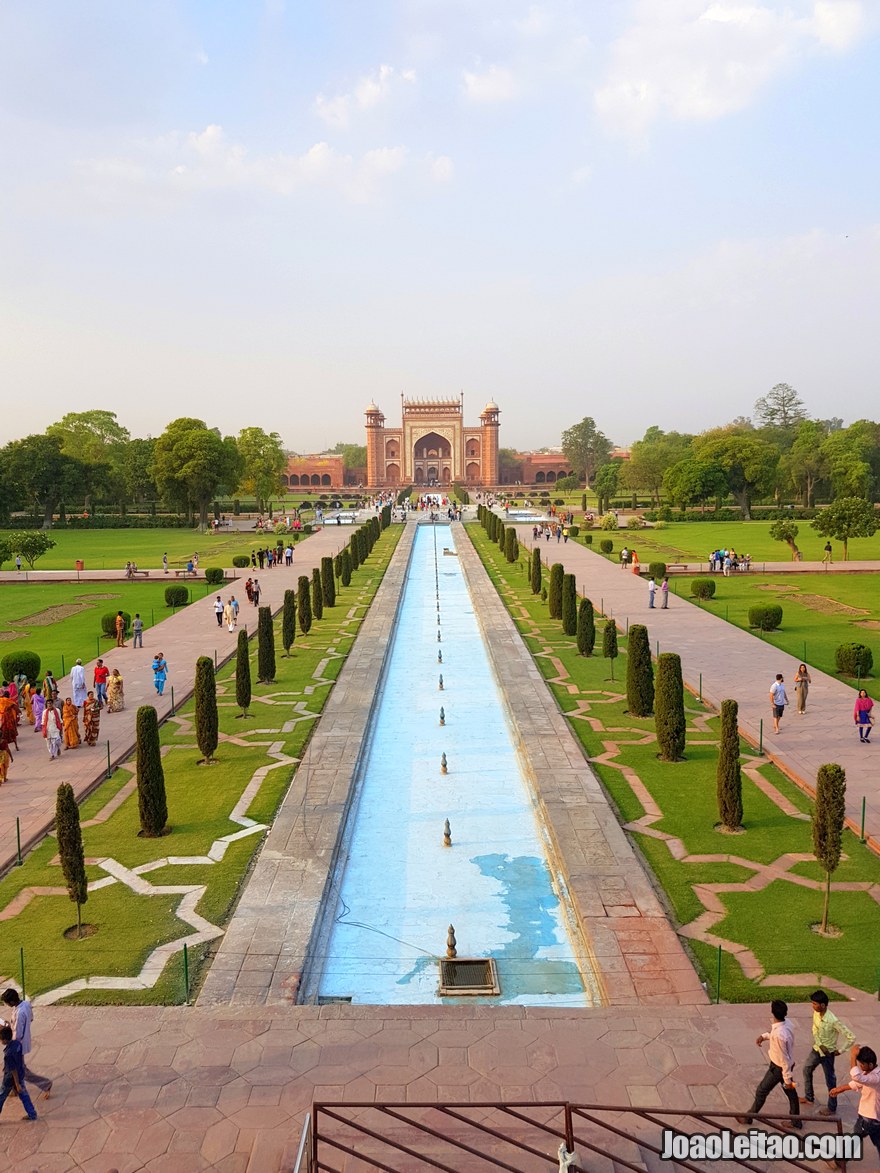
The bronze lamp you can see there is a gift from Lord Curzon in 1909. The side rooms are used as the offices for the Archaeological Survey of India.
East Gate of the Taj Mahal
The East Gate might be the most convenient entrance to the Taj Mahal, dodging the crowds coming in from Agra, 1 km away from the ticket office and the mandatory parking lot. The tomb of Sirhindi Begum, another wife of Shah Jahan, is nearby and therefore this gate is also known as Sirhi Darwaza. The central plant is octangular with 24 arches, an ample hall, and a balcony.
South Gate of the Taj Mahal
The South Gate is close to the Taj Ganj neighborhood, formerly known as Mumtazabad. To the right of the gate, there’s a tomb building made of red stone, with a dome on top and framed by a group of gardens. We’re not quite sure who was buried there, but people claim it was for Mumtaj Mahal’s servants (there are two tombs) and that’s why it’s called the Servants Tomb. The building is about 50 meters long, built above the ground.
Jilaukhana (Forecourt)
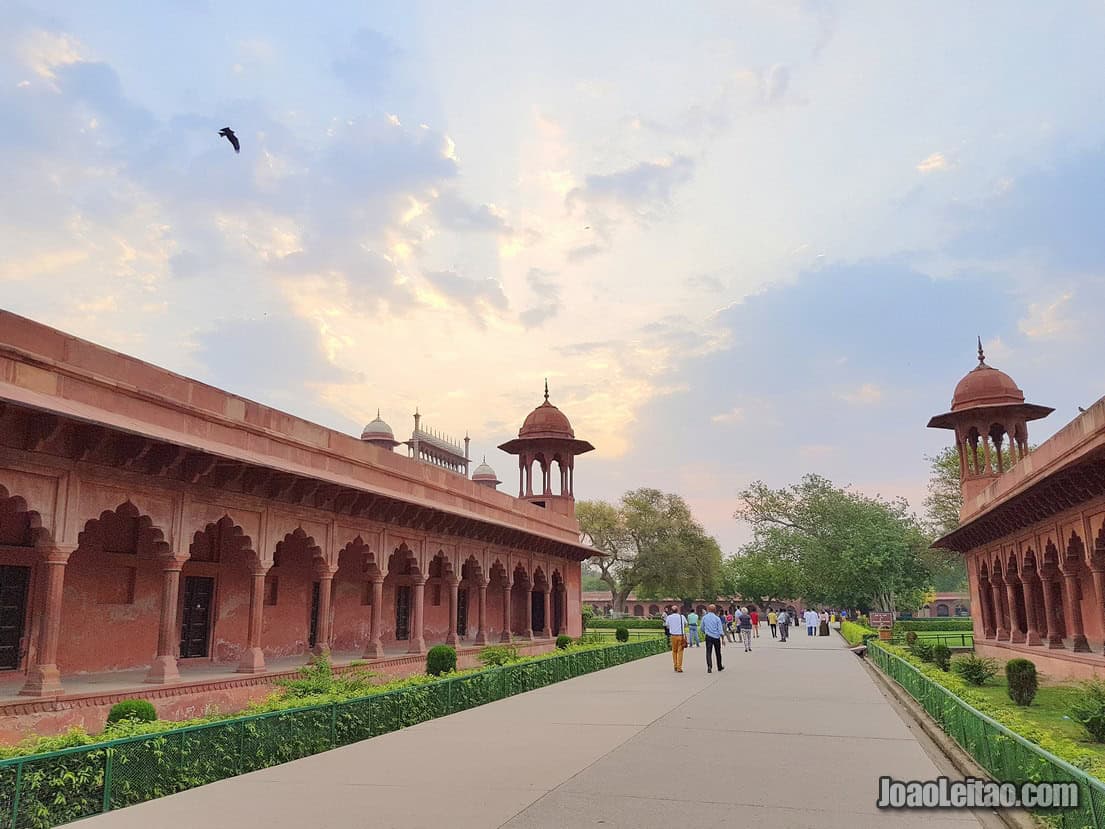
Jilaukuna (which means “in front of the house”) or forecourt is a distinctive mark of the Moghul architecture created by Shah Jahan. It separates the Great Gate from the bustle of the Agra market, and it used to be the meeting place for the visitors to the Taj Mahal to get ready before going inside the mausoleum. There are 128 rooms in the buildings around the courtyard that used to house the staff and the Koran students that lived there. This area was restored under orders of Lord Curzon between 1900 and 1908. This is where you’ll find the tombs of the other wives of Shah Jahan.
Practical Information
- Office of UP. Tourist 64, Taj Road, Agra +91 562 2226431
- Government of India Tourism Office, 191, The Mall +91 562 2226368, 2226378
- U.P. Tourism Reception Counter, Agra Cantt, Railway Station +91 562 2421204
- Tourism police station +91 945 4402764
- Superintendent of Police (city) +91 945 4401007
- Foreigners Regional Registration Office, Police Line Agra +91 945 4401717 (LIU)
- Antique Registration Office, 19, MIG, New Shah Ganj
- District Information Centre, Near Idgah Bus Stand +91 562 2420012


